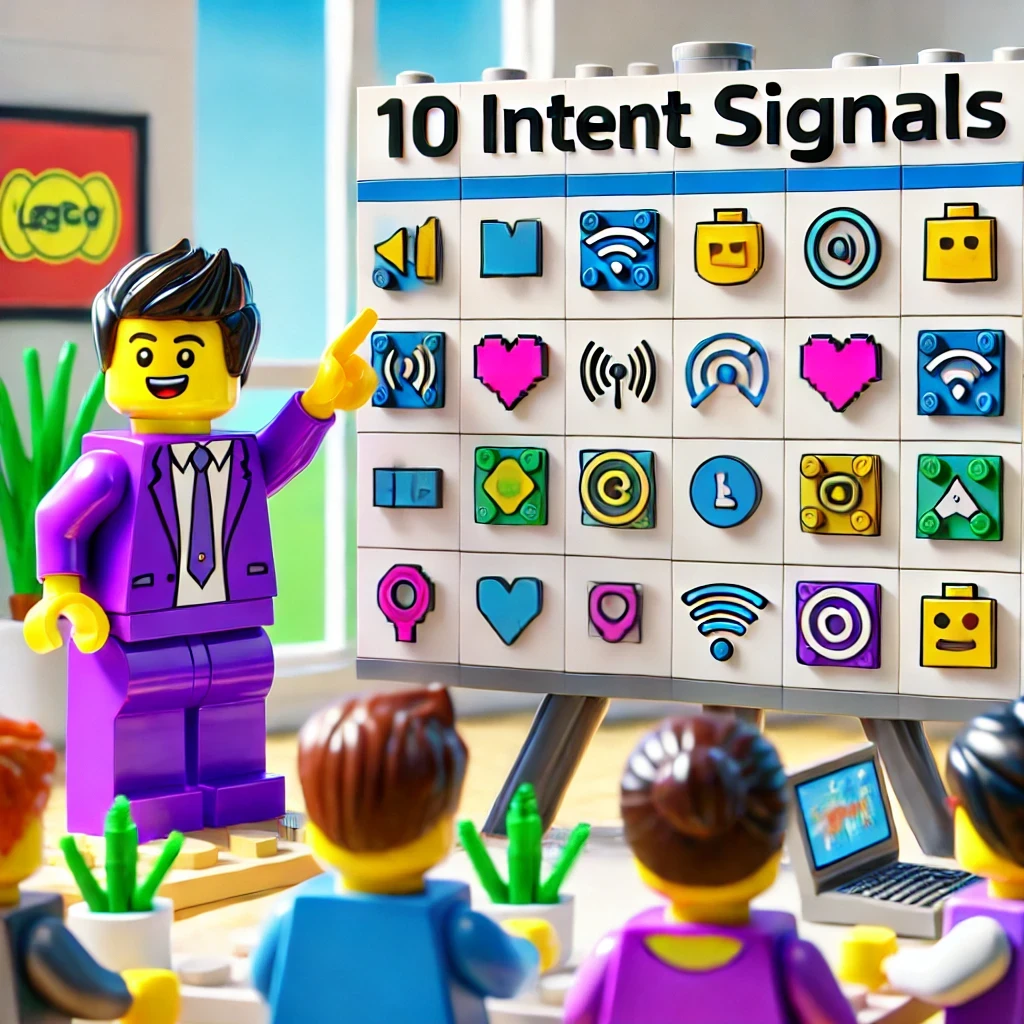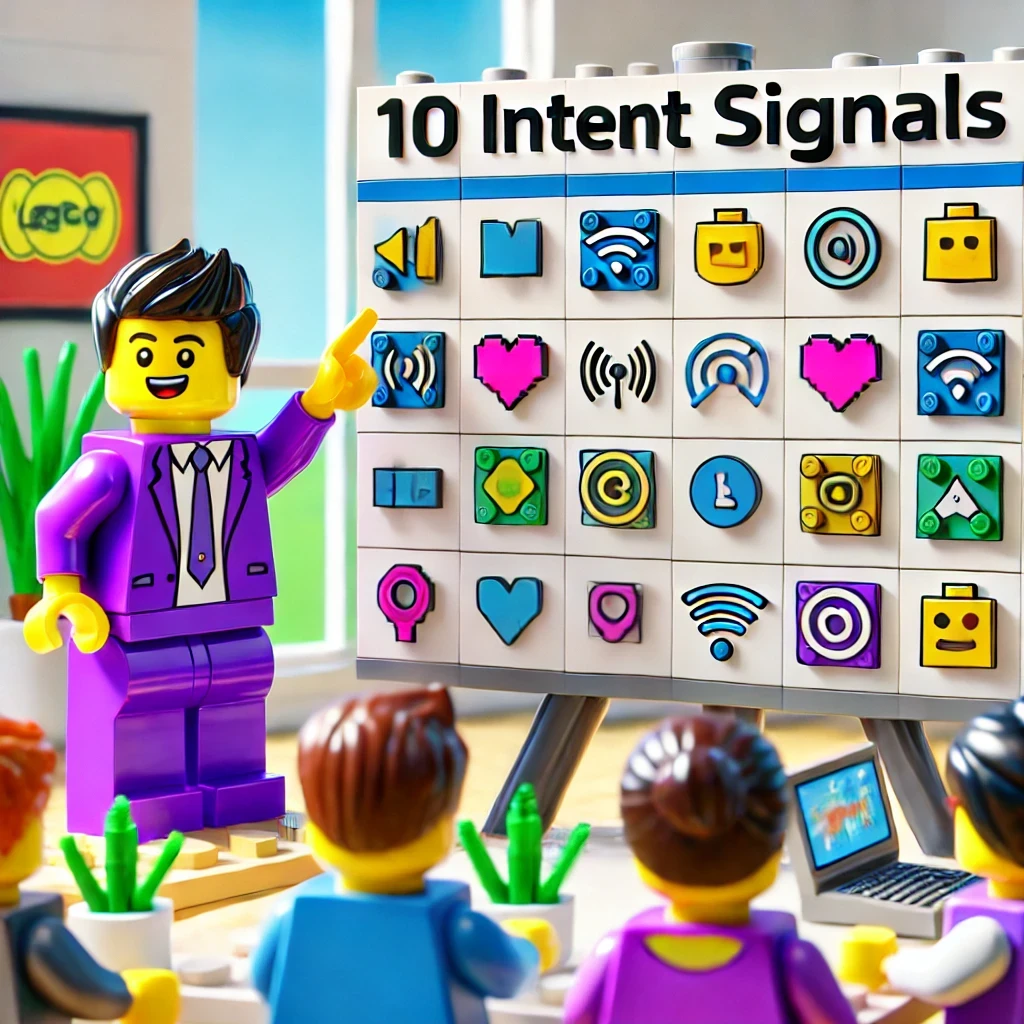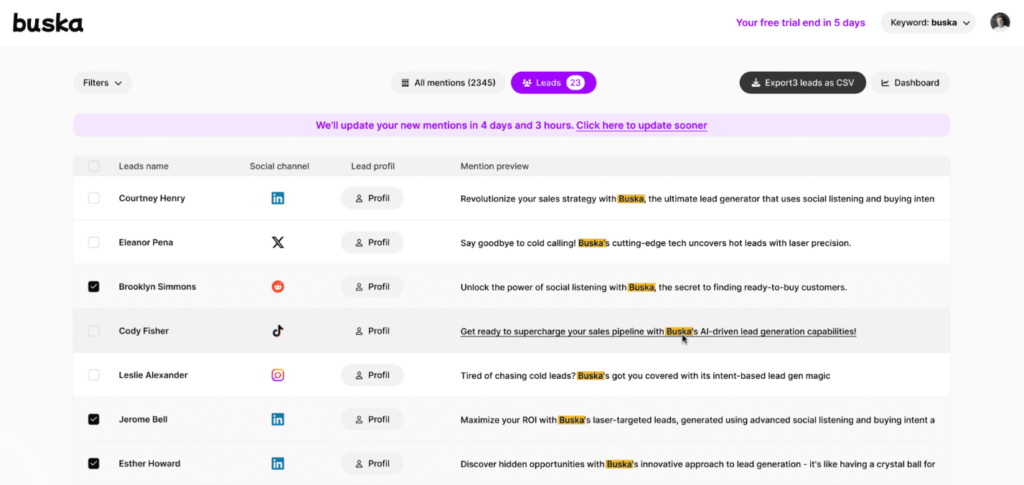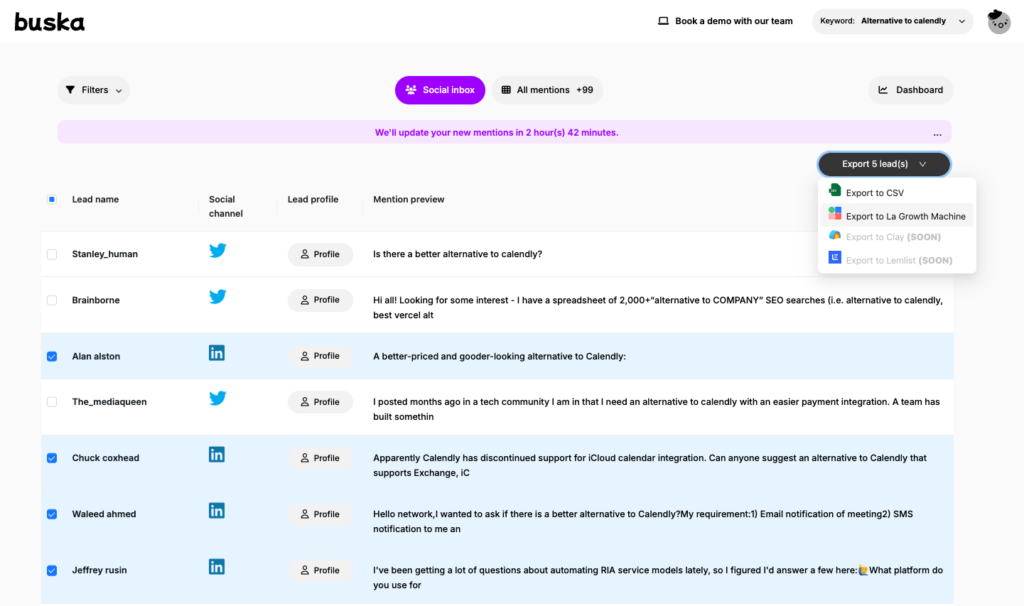10 señales de intención que le conseguirán clientes potenciales cualificados

Introducción
In B2B, identifying and engaging with potential customers early is crucial.
Strategies like cold outreach and ‘spray and pray’ were commonly used, but in 2024, the market is saturated, and these methods don’t cut it anymore.
Monitoring señales de intención—actions that show a prospect’s interest in your products or services—will help you understand their needs, prioritize leads, and tailor your outreach more effectively.
With intent signals, you can move away from generic messaging and focus on personalized, data-driven approaches that resonate with your prospects. Your outreach becomes relevant and targeted.
We’ll share 10 intent signals that will help you find more qualified leads for your business.

1. Keyword Tracking
Why It Matters: Keyword tracking allows you to analyze the search terms prospects use to find information related to your products or services. This insight reveals their interests and buying journey stage.
How to Use It Effectively:
- Use Tools Like Buska: It tracks every relevant keyword mentioned online.
Whether it’s mentions of your product, industry, or specific challenges you solve, tracking keywords gives you a window into your prospects’ thoughts. - Content Alignment: If prospects are searching for “cloud-based accounting solutions,” create blog posts and guides that address this topic directly, positioning yourself as an authority.
- Target Ads: Use keyword insights to target your ads more effectively based on the topics your prospects are actively researching.
2. Online Mentions
Why It Matters: Monitoring online mentions of your brand, products, or industry helps you understand what prospects think and identify the most relevant leads that are talking about your business or industry, signaling an interest. You can reach the right people at the right time.
How to Use It Effectively:
- Track Mentions with Buska: Buska can help track every lead that mentions your industry/niche/product category across social media, and forums…enabling you to engage prospects when their interest is high.
You can respond directly or export the leads you find directly to your favorite outreach tool. - Engage and Educate: Respond promptly to mentions with relevant information, answers to questions, or follow-up content, building trust and establishing authority.
- Competitor Mentions: Don’t just track your own mentions—monitor competitor mentions too.
This can help identify prospects who are in the market but comparing options.
3. Website Visits
Why It Matters: Website visits are a strong indicator of interest.
Tracking who visits your website is a strong way to identify leads who are considering your solutions.
How to Use It Effectively:
- Utilize RB2B or Leadfeeder: These tools allow you to identify who visited your website. They give you access to the contact info of individual visitors or company domains.
- Follow Up Strategically: You need to be smart in your contact with those leads after their visit. Avoid the trap of appearing creepy or stalky!
4. Content Consumption
Why It Matters: Different types of content engage prospects at different stages of the buying journey. By observing the content they interact with—such as blogs, case studies, or videos—you can understand their specific needs.
How to Use It Effectively:
- Track Types of Consumed Content: Monitor which pieces of content are popular. For example, if whitepapers on “AI in B2B Marketing” are gaining traction, you know prospects are looking for deep insights.
- Nurture with Tailored Content: Send related content to prospects to keep them engaged and move them through the sales funnel.
5. Email Engagement
Why It Matters: Monitoring email engagement helps identify leads that are ready for more personalized outreach.
How to Use It Effectively:
- Measure Opens and Clicks: Track email opens and clicks to determine which leads are most engaged. Prioritize those with high interaction rates.
- Pruebas A/B: Experiment with different types of content, subject lines, and CTAs to determine what resonates most with your audience.
- Time Follow-Ups: Use engagement data to time your follow-ups. If someone has recently clicked through an email, it’s a good time to call or send another message.
6. Social Media Interactions
Why It Matters: Likes, shares, comments, and follows are all indicators that prospects are interested in your offerings. Monitoring these interactions helps build a picture of their needs.
How to Use It Effectively:
- Utilice La Máquina del Crecimiento to extract leads: Use LGM’s import feature to extract the contact of people who engaged with your LinkedIn posts.
- Engage Directly: Respond to comments or engage through targeted outreach to build relationships and trust.
- Get your competitor’s interactions: Use LGM to extract also the people who interact with your competitor’s content on social media.
7. Event Participation
Why It Matters: Attendance at webinars, workshops, and industry events indicates a deeper interest in your niche.
How to Use It Effectively:
- Track Attendance: Monitor sign-ups for webinars or workshops, as participants are likely interested in your field.
- Follow Up Quickly: Send thank-you emails or follow-ups with additional resources. Personalize your approach to convert these engaged participants into leads.
- Extract Linkedin Event attendees: Utilice LGM to extract the contact info of Event attendees on Linkedin.
8. Competitor Engagement
Why It Matters: Monitoring competitor engagement reveals prospects actively searching for a solution, allowing you to present your offering as a better option.
How to Use It Effectively:
- Utilice buska: monitor competitor mentions online across social media and people looking for alternatives.
- Target Competitor’s Audience: If a prospect is engaging with competitor content, reach out to show how your product is superior.
- Use Comparisons to Win Prospects: Create comparison content or tools that highlight the strengths of your solution over competitors.
9. Product Reviews and Comparisons
Why It Matters: Tracking when prospects read or write product reviews indicates that they are actively evaluating their options, typically at the decision-making stage.
How to Use It Effectively:
- Monitor Review Sites: Track what prospects are saying about your product or similar solutions on sites like G2 or Capterra.
- Influence with Positive Reviews: Encourage satisfied customers to write reviews.
When prospects see positive feedback, they’re more likely to consider your product. - Respond to Reviews: Address negative reviews with empathy and solutions, showing prospects your commitment to customer satisfaction.
10. Trial or Demo Requests
Why It Matters: A trial or demo request is one of the clearest indicators of purchase intent.
Prospects are at the stage where they want to evaluate your product firsthand.
How to Use It Effectively:
- Get contact details before the demo: Ask for contact & company details when the prospect books the demo. Then use automation to enrich the contact before the meeting to know what to focus on.
- Personalize the Experience: Tailor the demo to focus on the prospects’ specific pain points to make it more impactful.
- Prompt Next Steps: Once a demo is complete, follow up with tailored next steps, such as a quote or a custom proposal.
Conclusión
Tracking intent signals is a powerful way to prioritize the right leads and make your lead-generation efforts more effective.
By understanding what prospects are searching for, consuming, and engaging with, you can tailor your approach, engage leads at the right moment, and ultimately increase your chances of closing deals. Integrate these 10 intent signals into your lead generation strategy, stay ahead of the competition and reach your ideal customers more effectively.
Want to book more qualified lead meetings?
Visit Buska.io and start tracking social intent signals, you get a 7-day trial to test different keywords. 🎁



